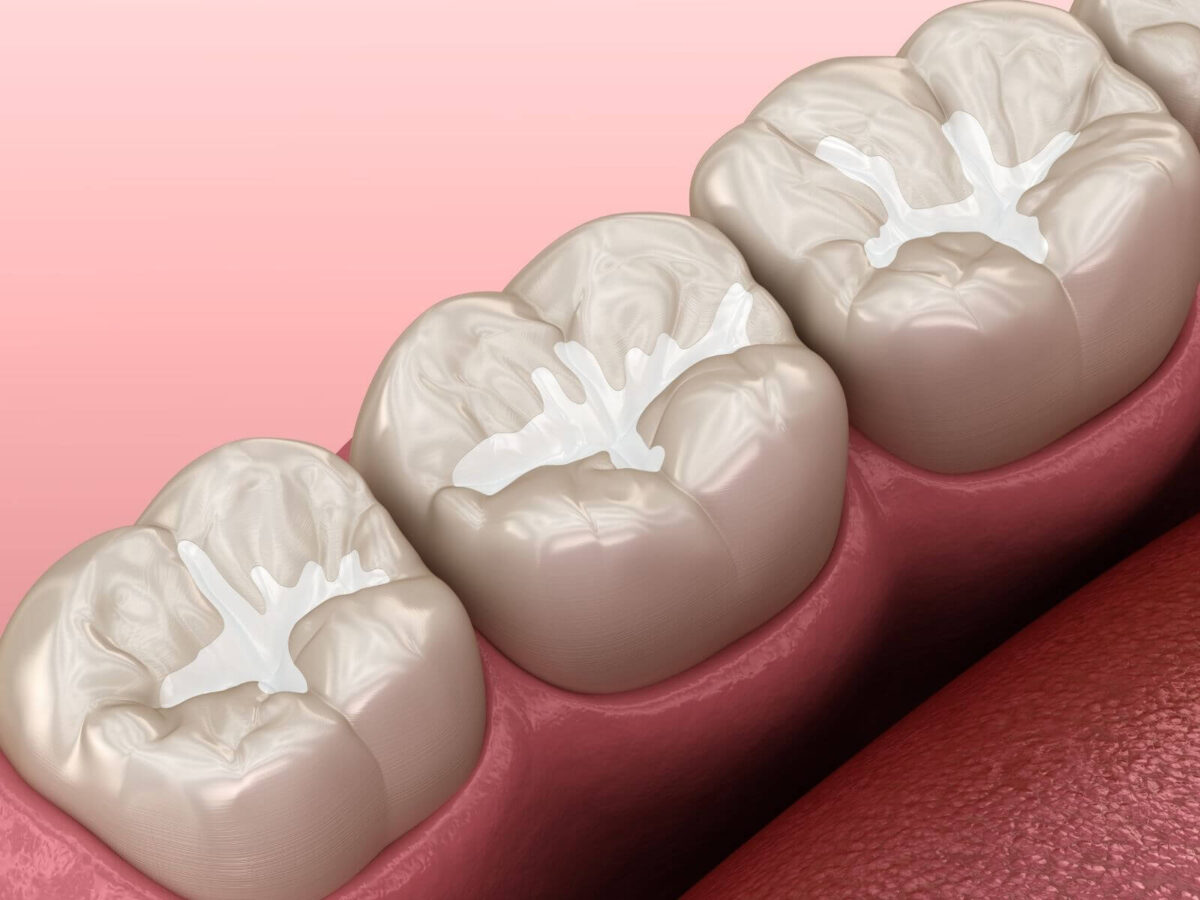Blog
Dental hygiene tips for healthy teeth & gums

How Dental Sealants Protect Your Teeth From Cavities
Dental caries are among the most prevalent diseases around the globe. The American Dental Association says that 91% of adult Americans aged 20 and older have had at least one cavity in their lifetime.
Some dental hygiene pointers include training in proper hygiene via brushing and flossing daily, fending off sugary products, and having regular checkups with a dentist. These are the best ways to guard against cavities. Based on your needs, your dentist provides dental sealants, adding extra protection against tooth decay.
Why Are Cavities A Problem?
The biggest problem with cavities is that it is a given that the teeth will continue to decay until an oral health professional intervenes. If not treated, cavities let in worse infections that penetrate the deeper areas of your teeth or extend to more areas of your teeth and mouth. Its causes and effects include jawbone infections, blood infections, gum diseases, and tooth loss. Cavities are also painful and can cause problems with sensation and motor function of the teeth.
What Are Dental Sealants?
In particular, dental sealants are thin plastics that paint on the teeth in liquid forms applied at the dentist. They put a sort of liquid sealant on the teeth so that it bonds and effectively covers the surface of the teeth.
Historically, sealants could be applied only on the permanent molars in the posterior, and the AAPD has endorsed the application of sealant on the other teeth, including the baby teeth and other permanent teeth besides the molars. The dental sealant is easy and fast, leads to no discomfort, and is often applied when the child is on a check-up and cleaning if necessary.
Who Can Use Dental Sealants?
A person of any age can have tooth decay and cavities affecting the teeth. Therefore, this dental procedure is appropriate for individuals of all ages. Also, children are highly susceptible to oral cavity diseases.
Dental sealants may be applied to children as young as six and adults with healthy teeth that have not developed cavities or require fillings. Once their permanent molars and premolars appear, children should know that sealants are essential and get them.
One can discover their advantages after grasping the basic concepts of dental sealants.
Dental Sealants Shield the Teeth
In most cases, sealants are recommended to cover the molars because the particles of food and bacteria that gather on the teeth create plaque. The posterior teeth, mainly molars and premolars, have complicated grooves and increase the risk of decay because they are not easily cleaned. Consequently, more or less, cavities develop in the molar region of the teeth. The bacteria which lead to decay are then found in the grooves of the chewing surfaces of those teeth.
Fluorides form a seal and a protective coating on the tooth enamel, preventing food particles and bacteria accumulation. Dental sealants are not health-enhancing and are not meant to replace other preventive measures, such as the application of fluoride gel and general public oral hygiene. In most cases, they are smooth, affordable, and attractive means of preventing the teeth from requiring fillings.
Applying Dental Sealants
Dental sealants are prepared from a particular plastic material in a liquid state, put on the teeth, and then hardened. To begin with, the dentist will effectively remove and polish the molars. Using a brush, they will apply the sealant to the teeth that have been targeted. It has the outstanding feature of being a shade similar to the natural teeth color after applying the sealant.
Usually, the sealant is painted on the teeth and to the dentist’s specifications. The sealant can either be set naturally or can be subjected to a special kind of light depending on which type of sealant is used. The light hardens the sealant over the teeth, making a thin, hard, resistant, and protective layer clear on the teeth. Dental sealants are painless and are applied during one visit. The procedure for putting in dental sealants involves the following.
How Long Do Sealants Last?
Sealants’ lifespans can vary significantly based on a child’s oral hygiene practices. While some children might only need sealants replaced once during the lifetime of their primary teeth, others may require multiple replacements.
The dentist will recommend using a sealant on the permanent molars as soon as he or she sees them. By so doing, once there is no tooth decay, the teeth will be protected similarly. Sealants should not be applied to a tooth that has a filling done on it.
Benefits of Dental Sealants
Prevents Cavity, Plaque Accumulation, and Bacteria
The filling is a bit of a protective barrier that avoids the establishment of plaque plus bacteria. Dental sealants also guard the teeth from cavities and infections.
Reduces Deep Grooves
With their broader fissures and pits, Molars are more prone to trapping food particles than other teeth. While toothpaste can reach these grooves, toothbrushes may not entirely remove the lodged debris. This food debris causes the formation of both plaque and bacteria, but dental sealants can create a protective layer to help hinder tooth decay.
Quick and Painless Process
In contrast to protocols commonly instituted when performing other dental operations, dental sealants do not cause pain. In addition, they are easy and fast procedures that usually require 1-2 cleanings and the application of teeth sealants.
Budget-Friendly
Sealants are one of the most cost-efficient procedures in the dental field. As it is for cavity prevention, it would save the money required to treat cavities. We can conclude that dental sealants are significantly cheaper than dental restorations.
Long Lasting and Durable
Sealants are nonpermanent and can last several years once applied until the patient requires a new application. They can also effectively protect the teeth for at least 5-10 years. This duration might exceed if oral hygiene is practiced and hard food is avoided. Thus, with equal care, this dental procedure is as long-wearing as possible.
As much as possible, the dental sealants last indefinitely but may need replacement, ideally between three to three and half years.
In as much as this takes only a few minutes on each tooth, kids get, on average, two to five years of coverage against the common cavities found in children. Even in the best-case scenarios, the effectiveness of sealants can be observed even after a decade.
Conclusion
As long as you maintain correct brushing and flossing, it is a fine idea to get a dental sealant done to prevent a cavity. Though skinny and verging on having a defensive outlook over your teeth, they are an excellent shield against tooth decay in its early stages and in cases where your tooth has begun to decay slightly.
If you have concerns about developing dental caries, experience frequent tooth decay, or are a parent concerned about your child developing cavities, dental sealants can offer you or your child peace of mind with the added benefit of a healthy mouth.
Contact Elgin Dentist for all your needs.


